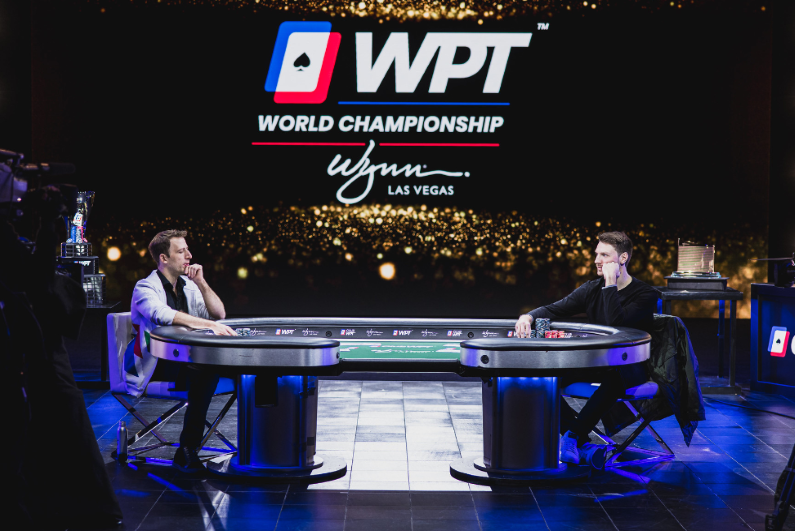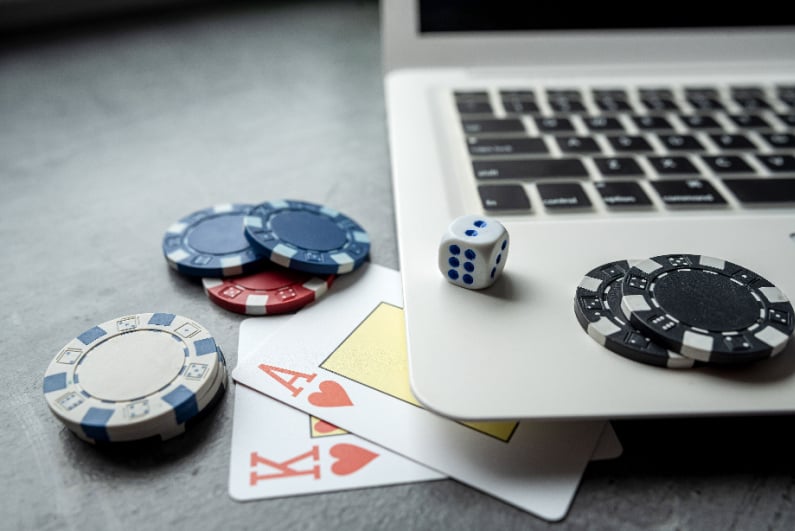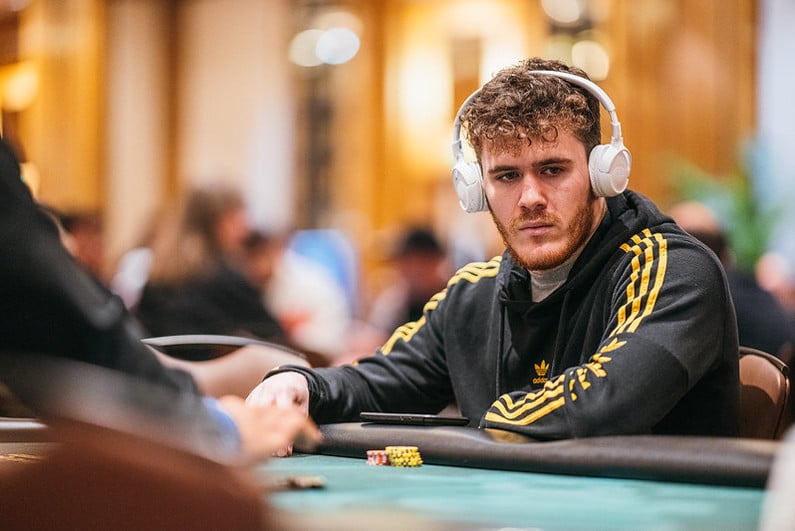Hudon the last man standing
When play finally ended in the wee hours of Tuesday morning, talented mixed game specialist Benny Glaser was on the cusp of a prestigious No Limit Hold ‘Em title. Standing between him and the 2022 World Poker Tour (WPT) World Championship were five players, four of whom were trying to outlast each other and one of whom was in the seventh circle of ICM Hell.
the kind of spot poker players dream about
It was an enviable position for the man from Southampton, the kind of spot poker players dream about, when you can open liberally, leveraging your chip-lead, handcuffing your opponents, putting them in the bin. He came into that penultimate day with the chip-lead and he wielded it expertly, putting distance between himself and his nearest rival Eliot Hudon.
When the dust settled on the final table, however, it was Hudon who was the last man standing, a superb performance by the Canadian who managed to turn the tables in dramatic fashion right at the start of the final table. He took the lion’s share of the incredible $29m prizepool, walking away with $4.1m.
One world in 80
In a hand that has polarized the professional playing community, Glaser shoved into the field with A-J, applying maximum pre-flop ICM pressure on Hudon who had 48 big blinds right behind him and the rest of the players who were all short:
To go from two of six to out in sixth is the definition of an ICM catastrophe so Hudon is forced to fold all but a couple of premium hands. A-J blocks Aces so, in reality, he only has nine combos with which he is happy to commit. If we factor in some future game considerations, then Queens becomes a tempting proposition but that’s still just 15 hand combinations out of of 1225 possibilities (1.2%)
It just so happened that we ended up living in that one world out of 80 where Hudon found pocket Kings and made the call. He held and the tables were instantly turned with Hudon enjoying the 100 big blind monster stack and Glaser reduced to sub-50 big blinds and forced into a dog fight just to get heads-up.
Two ways to go
With the chips distributed in this way, there are two strategic ways that you as chip-leader can use your advantage. You can shove into the players who, in the pursuit of outlasting each other, can only call with the narrowest of ranges. Alternatively, you can play small-ball, encouraging the players to see flops with you, navigating down the streets, often making them commit chips before dropping the ICM hammer on the turn or river.
nudging your opponents into harder-to-study branches of the game tree
The former approach is ruthless in its efficiency but it gives your opponents a relatively easy decision so long as they are prepped for that possibility. They simply have to have their calling ranges nailed down. The latter approach is more nuanced and devilish, nudging your opponents into harder-to-study branches of the game tree, forcing them into unclear places from where they may make a mistake.
While I am certain that there will be players who disagree, the former approach, while effective and arguably ‘solver-approved,’ is clunkier. This play limits your own decisions in the hand to one and does the same for your tablemates. It negates your post-flop edge if you perceive yourself as having one. It completely removes any physical component which could certainly be relevant on a high profile big money live final table. It is also worth noting that it is not necessarily the solver’s first choice if given a wider range of open sizes (I saw one sim that prefers a 4x open if given the choice between 2x, 4x, 6x, and shove).
The latter approach is a decision to ‘play poker,’ embracing the complicating factors of run-outs and different bet size options you may have at your disposal on later streets. When you have a big chip-lead, you can play a wide variety of hands and your opponents can only play back with a narrower, more predictable range. They might also have to put all their value hands into their bluff range so as to protect their marginal strength holdings. As a consequence, their defensive bluff-catching posture cannot extract value in the same way that you can.
Armchair Quarterbacks
As I arrived to rail the final table, the players were on their way out. It had been a very fast affair, a little over two hours as Hudon made short shrift of his tablemates in pursuit of glory. Glaser’s rail were split when it came to the key hand, some feeling like it was ‘standard’ while others finding it unnecessary.
That same split was in evidence in the comments of onlookers. Matt Hunt defended the play:
Reflecting back on my own satellite study down the years, I suggested one possibly overlooked factor:
Matt Berkey pointed out that we are all just watching from the sidelines, a valid point but i also think it’s okay to respectfully debate the merits and demerits of certain lines, especially when you put skin in the game:
Ultimately, credit must go to Glaser for playing very well after this outlier hand and still reaching heads-up play. When he reflects on the wisdom of his decision to play big-ball poker, the $2.8m will no doubt be a comfort.




